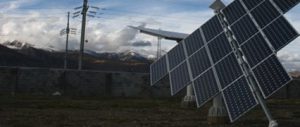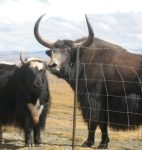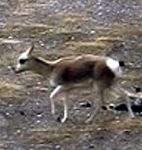How does a Tibetan government official view the challenges of climate change? Last September I found out when I toured Tibet with several colleagues.
Three hundred kilometres from Lhasa, on the northern Tibetan plateau, lies the prefecture of Nagqu. It was our first port of call, since the Chinese Academy of Agricultural Sciences (CAAS) Institute of Environment and Sustainable Development in Agriculture runs a climate research project here.
Lin Erda, the project head and a member of the Chinese People’s Political Consultative Conference Population, Resources and Environment Committee, put us in touch with Gyaltsen Wangdrak, deputy chief of Nagqu prefecture. Lin had met Wangdrak at a grasslands protection conference in 2003, and had been impressed by his report on environmental issues facing the northern Tibetan plateau.
The northern Tibetan plateau is 4,500 metres above sea level on average. The Yangtze River, the Nu River and the Lancang River all rise here, and the area accounts for almost one-tenth of China’s grasslands. However, the grasslands have suffered major degradation in recent years.
Lin decided to work with Wangdrak and use satellite data to monitor the extent of the damage to the Nagqu grasslands. This data allowed them to draw up ecological functional zones for the area. They divided it into protection zones, areas in need of improvement, zones needing control and development zones. It was the first such proposal in Tibet, but could it actually be implemented? According to Wangdrak, the proposal was distributed to every local government official in his prefecture and it has become the “theoretical basis of planning for land use, environmental protection and construction.”
But the cooperation between Nagqu and CAAS did not always run smoothly: the researchers initially ran tests of the grassland’s livestock carrying capacity under different climate and ecological conditions. Wangdrak explained that this would allow predictions of carrying capacity to be provided to herders “just like weather forecasts”. But after the completion of the Qinghai-Tibet railway, the prefecture decided to use that land to build a large distribution center. “For me it was like a television reporter losing his camera,” he says.
The tests were relocated to Amdo county, which is 5,000 metres above sea level and not far from the Tanggula Pass. Here they became part of a national science and technology project on adaptation to climate change in the northern Tibetan “ecological buffer zone.”
As we headed north along the Qinghai-Tibet highway to Anduo, we saw bare patches of soil on both sides of the road. Wangdrak explained these were evidence of the grasslands’ deterioration. Herding is an important part of Nagqu’s economy, but climate change, over-grazing and pests have caused severe damage. The satellite data showed that half of the grasslands were degraded in 2004, totalling 320 million mu (213,300 square kilometres). Over 60 million mu (40,000 square kilometres) were classed as severely degraded or very severely degraded.
Wangdrak and his colleagues want to make sure things do not get worse. As we drove through the patchy grasslands, he told us about an experiment to take water from the head of the Nu River to use in sprinklers. These and other demonstration measures, principally planting, fertilisation and pest extermination, are designed to gradually restore grassland fertility. He hopes these demonstrations will form part of a proposal for dealing with climate change that can be implemented by herders on the plateau.
“Global warming is a major influence on environmental change in the grasslands,” Wangdrak says. All we can do is figure out how to adapt. As far as knowledge about the grasslands and the herding industry goes, I can only do what I can and start from basic research.”
Flooding around lakes had become a problem in recent years, said Wangdrak. The village of Mechu had been repeatedly flooded since 2004, with 200 households forced to leave homes that their families had occupied for generations. He clearly remembers the scene, waters rushing over low-lying grasslands and rising around their feet. Homes and livestock pens were almost completely inundated. “Nothing like that had been seen before. Not in historical records dating back to the Ming Dynasty, nor in local histories.
Many scientists blame the rising waters on melting glaciers, a thaw that has been accelerated by global warming. The increasing level of the lakes means that 10,000 people in Nagqu, a prefecture that is home to less than 420,000 people, have already been displaced or are waiting to be relocated.
Wangdrak leaves us with a question. Western scientists can detect pollutants that originate in Asia, he says. Does this mean that Chinese scientists will ever be able to pinpoint the greenhouse gases that western countries have emitted – and demonstrate their influence on his local ecology?
For this local Tibetan official, climate change is a major part of his day-to-day work.
Li Taige is a Beijing-based journalist. He obtained a master’s degree in engineering from Sichuan University in 1997 and was a Knight Science Journalism Fellow at the Massachusetts Institute of Technology (MIT) in 2003-04.
Homepage photo by livepine


